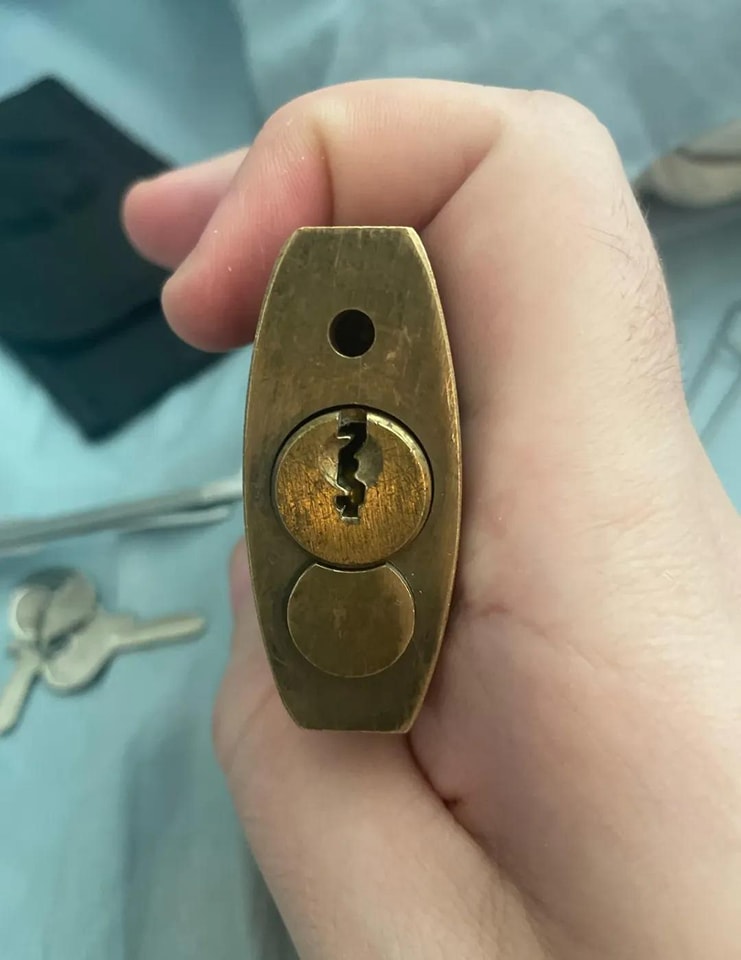If you’ve ever taken a closer look at the bottom of your padlock, you might have noticed a couple of tiny holes that seem pretty insignificant at first glance. Most people overlook them, assuming they’re just part of the manufacturing process or some random design feature.

But these little holes—often referred to as “pin holes”—actually serve a very important purpose when it comes to the overall functionality and durability of your padlock. Believe it or not, they’re part of what helps keep your lock working properly, especially in harsh conditions, and understanding their role might change the way you view your everyday security tools. One of the main reasons these holes exist is to allow water to drain out of the lock.
Think about it: padlocks are often used outdoors, where they’re exposed to rain, snow, splashes, or high levels of humidity. Water can seep into even the smallest openings, and if that moisture becomes trapped inside, it can quickly lead to rust or corrosion, damaging the internal components and making the lock hard to use—or even impossible to open. These small drainage holes give that water a way to escape, preventing it from pooling inside and causing long-term damage. Without this simple but effective feature, a rainy day could shorten the lifespan of your lock by months or even years. In addition to keeping water out, these tiny holes are also incredibly helpful when it comes to maintaining your padlock. Over time, dirt, dust, and debris can work their way into the lock, making it stiff or difficult to turn. That’s where the second purpose of these holes comes into play: lubrication.
If your lock starts sticking or feels hard to open, you can use the pin holes to apply lubricant directly to the internal mechanism. All it takes is a can of spray lubricant with a straw attachment—insert the straw into the hole, give it a quick squirt, and let the oil work its way through the gears and springs inside. This can loosen up any gunk or buildup that’s causing problems and restore the lock’s smooth operation almost instantly. It’s a quick, easy fix that can save you from having to replace a perfectly good padlock.
But let’s take it one step further—why is lubrication so important in the first place? Over time, every padlock goes through wear and tear. Exposure to the elements, repeated use, and the accumulation of dust and grime all take a toll on the internal components. These parts start grinding against each other, creating friction that makes the lock harder to operate. Not only does this make it more difficult to use, but it also increases the chances of something breaking or wearing out. Regularly lubricating your lock helps prevent this kind of damage by reducing friction and allowing the moving parts to glide smoothly.
It also forms a protective layer that shields the internal metal components from moisture and corrosion. So, by using the pin holes to apply lubricant, you’re not just fixing a sticky lock—you’re actively extending the life of the lock and preserving its reliability. In fact, performing this kind of maintenance just a few times a year can significantly boost the overall performance and longevity of your padlock. So the next time you see those little holes at the bottom of your padlock, you’ll know they’re far more than just a design detail. They’re a key part of what makes your lock work well in all kinds of environments.
From draining water to applying lubricant, these pin holes are the unsung heroes that keep your security strong. A little attention to them now and then can go a long way toward making sure your padlock stays in excellent shape and continues to protect your valuables for years to come. Regular maintenance might seem like a small step, but it makes a big difference—and now that you know the secret behind those tiny holes, you’re one step ahead when it comes to smart home security.





